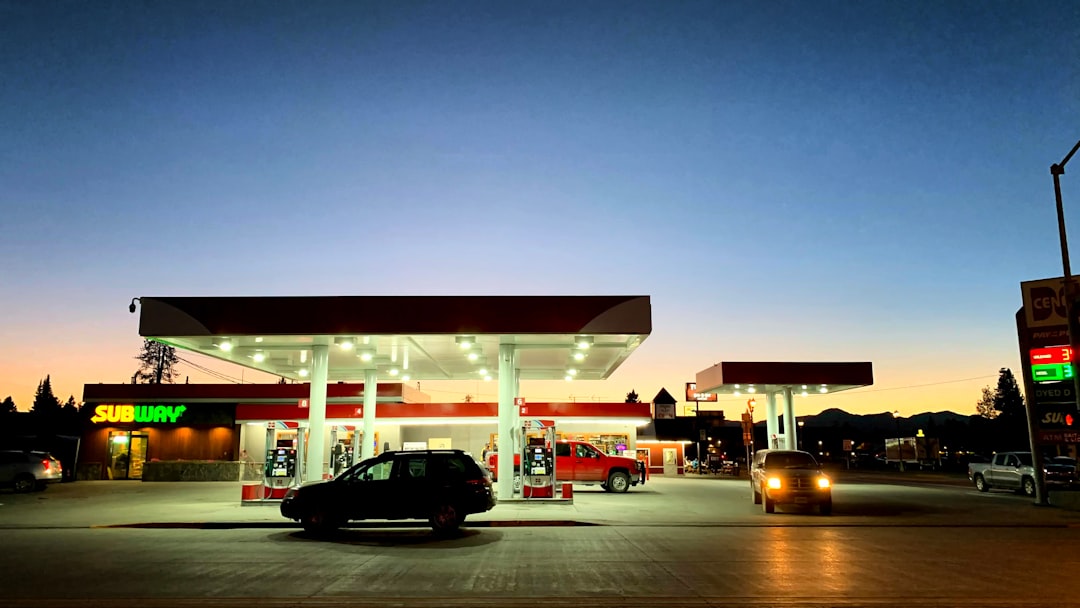In the evolving landscape of energy and consumer behavior, the traditional fuel station has transformed into a dynamic hybrid: the fuel-plus-retail model. As the rise of electric vehicles (EVs), digital payments, and changing consumer expectations shift the market, operators are seeking new ways to improve profitability and customer experience. Forecasting volume, throughput, and ancillary sales has thus become increasingly vital. This process involves not only predicting fuel demand but also anticipating retail performance within convenience stores, coffee shops, and food outlets on-site.
The Rise of the Fuel-Plus-Retail Model
Fuel stations are no longer solely about pump volume. Increasingly, they serve as hubs for quick-service food, beverages, carwashing services, and even parcel pickups. This multipurpose model is designed to maximize revenue while capturing the attention of time-conscious, value-driven customers. As such, accurate forecasting that integrates both fuel and retail metrics has become indispensable.
Operators are now tasked with answering crucial questions:
- How will fuel demand fluctuate in coming months?
- What foot traffic patterns will emerge at various times and days?
- Which complementary products should be promoted to boost spend-per-visit?

Understanding Fuel Volume Projections
Fuel volume forecasting refers to the prediction of how much fuel will be sold over a specific time period. Factors influencing fuel sales include:
- Seasonal Variations: Holidays, school terms, and weather can impact driving trends.
- Fuel Prices: Price elasticity plays a role in consumer fill-up behavior.
- Economic Conditions: Disposable income levels, inflation, and commuting trends directly affect demand.
- EV Penetration: A growing number of electric vehicles impacts fuel consumption forecasts.
Modern forecasting models incorporate historical sales data with machine learning algorithms to identify patterns and anomalies. Integrating this data with external sources like government energy reports or traffic analytics can further refine projections.
Maximizing Throughput for Operational Efficiency
Throughput, in the context of the fuel-plus-retail model, refers to how efficiently a site can serve customers—both in terms of fuel and retail aspects. Higher throughput translates into better revenue per square foot, reduced queuing and wait times, and improved customer loyalty.
Operators should monitor KPIs such as:
- Pump Turnover Rate: How many vehicles are served per pump per hour?
- Retail Transaction Speed: How efficiently are checkout counters processing sales?
- Peak vs. Off-Peak Utilization: Are there opportunities to redistribute traffic during quieter periods?
Improving throughput is not only about speed—it also entails having the right staffing levels, optimized store layouts, and intelligent point-of-sale technology to handle volume spikes seamlessly.

Forecasting Ancillary Sales: From Coffee to Car Washes
Ancillary sales include non-fuel purchases such as coffee, snacks, lubricants, quick meals, car washes, and more. In today’s fuel-plus-retail stations, these sales can represent 30% to 50% of location revenue. Forecasting these revenue streams requires analyzing different data sets than fuel volumes:
- Consumer Purchase Behavior: Loyalty card data and basket analysis can reveal popular items and pairings.
- Promotional Impact: Price changes and limited-time offers significantly affect volume.
- Weather Effects: Cold days may drive hot coffee sales, whereas summer increases cold beverage and carwash demand.
Operators should also adopt collaborative forecasting. This involves integrating supplier promotions and seasonality trends into their sales plans. For instance, a promotion on fast-food items might be coupled with a fuel discount to boost both verticals simultaneously.
Leveraging Technology to Support Forecasting Models
There are three core technologies helping fuel-plus-retail operators improve their predictive accuracy:
- Artificial Intelligence (AI) and Machine Learning: These technologies analyze historical data to find patterns and predict future demand with high accuracy.
- Geospatial Data Mapping: Traffic flows, local events, construction, and competitor proximity influence sales forecasts.
- Integrated POS and CRM Systems: Real-time data collection helps identify trends as they emerge.
Operators who adopt integrated technology platforms can transition from reactive to proactive strategies. For example, if AI predicts a spike in holiday fuel consumption, the station can offer discounts on bundled snacks or initiate limited-time offers to attract in-store purchases.
Challenges in Forecasting and Suggested Solutions
Despite the benefits of forecasting, several challenges persist:
- Data Silos: Many operators struggle to unify fuel, retail, loyalty, and supply chain data.
- Unpredictable Events: Geopolitical crises, pandemics, or extreme weather can skew forecasts.
- Consumer Behavior Volatility: Shifting loyalties among increasingly informed customers are hard to predict.
Solutions to these barriers include investing in data architecture, using rolling forecasts rather than fixed intervals, and ensuring cross-functional collaboration between finance, operations, and marketing teams.

Frequently Asked Questions
1. How can fuel and retail sales forecasts be integrated?
By using a centralized data platform that includes both point-of-sale information and fuel metering, businesses can analyze cross-category behaviors and detect patterns like the correlation between full tanks and premium food purchases.
2. What role does weather play in fuel and ancillary forecasts?
Weather significantly impacts both. Rain or snow may reduce travel—and fuel purchases—while sunny weekends can increase both foot traffic and sales of convenience items. Forecasting models must factor in weather variations at a local level.
3. How frequently should forecasting models be updated?
Ideally, models should be updated weekly or biweekly using rolling forecasts. Real-time data integrations allow for constant refinement and better responsiveness to sudden changes.
4. Can small fuel station operators benefit from forecasting models?
Absolutely. Even modest investments in digital tools can yield outsized benefits. Many cloud-based forecasting tools are scalable and affordable for small and independent operators.
5. What KPIs should station managers monitor regularly?
Key performance indicators include:
- Fuel volume sold per day
- Number of in-store transactions
- Average transaction value
- Customer footfall by hour
- Conversion rate from pumps to store
Conclusion
The convergence of fuel and retail operations at service stations is reshaping how operators view profitability, efficiency, and customer engagement. By adopting comprehensive forecasting strategies that integrate fuel volume, throughput metrics, and ancillary sales, these businesses can unlock new layers of growth.
Those who embrace AI, machine learning, and real-time data integrations are not just forecasting—they are future-proofing their operations. As the market continues to evolve, the fuel-plus-retail model stands as a testament to how adaptability and innovation drive success.
yehiweb
Related posts
New Articles
Jobs That Hire at 15: Companies Hiring Teens Right Now
For many teenagers, getting a job at 15 is more than just a way to earn money—it’s a valuable opportunity…


